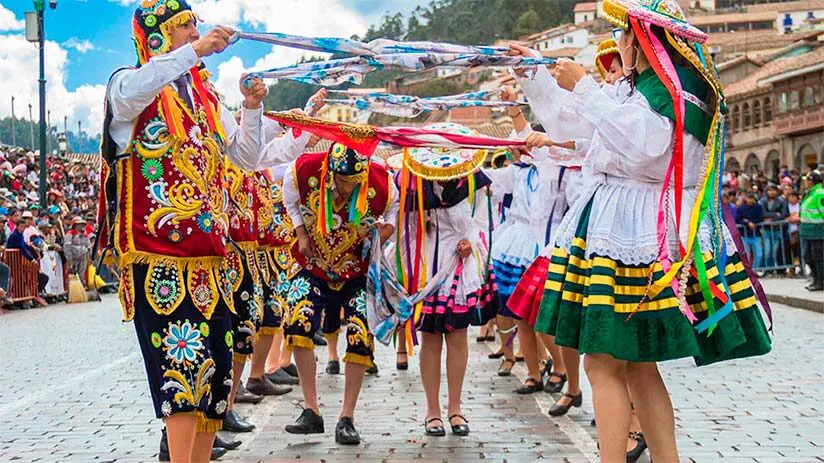Peru is a country full of traditions, a rich culture, and an extensive list of attractions to explore. And it’s no surprise that in the midst of all of that, there are a host of festivities throughout the year. The Andean country celebrates around 3,000 festivals, most of which are in honor of a patron saint’s day. Being a Catholic country, many holidays in Peru have religious overtones.
These saints were introduced as part of the Christian calendar sold in Peru by the Spanish. Even, most of these have been integrated with the native traditions of Peru and add color and flavor to the daily life of the Peruvian people.
Therefore, together with Machu Travel Peru, we have prepared a small article to know better tits beautiful festivities. Meet some of the best festivals in Peru!
All of the festivals and holidays in Peru month by month
- January 20 – Chiaraje
- January 28 – Lima’s foundation
- February 2 – Virgen de la Candelaria
- February 26 – Carnivals
- March 5 – Trujillo foundation
- March 31 – Lord of the Earthquakes
- April’s first – week Holy Week
- May 1st – La Virgen de Chapi
- May 15 – Lord of Torrechayoc
- May 2 – Cruz Velacuy
- June 8 – Corpus Christi
- June 24 – Inti Raymi
- June 26 – Lord of Qoyllority
- July 24 – Pisco’s day
- July 28 – Independence Day
- August 1st – Pachamama Raymi
- August 15 – Arequipa foundation
- August 30 – Santa Rosa de Lima
- September 17 – Lord of Huanca
- October 8 – Angamos battle
- October 28 – Lord of the Miracles
- October 30 – Creole Song Day
- November 1st – All Saints’ Day
- November 2nd – Puno’s foundation
- December 24 – Santuranticuy
- December 25 – Christmas
- December 31 – End of the year’s party
January 20 – Chiaraje
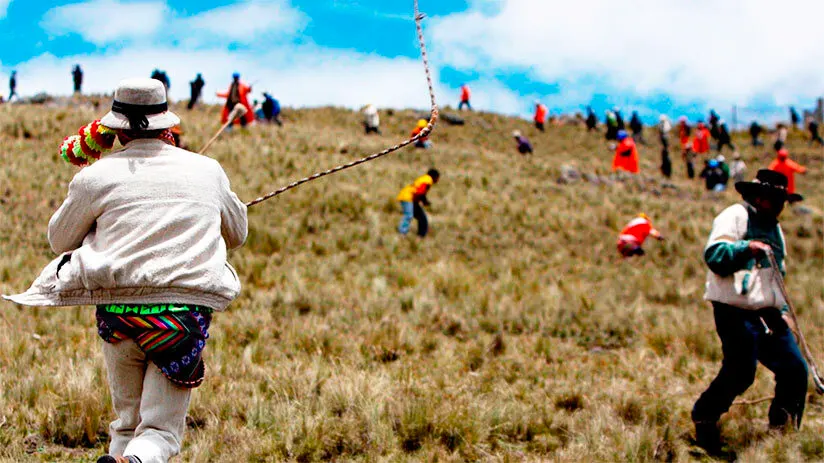
On January 20, the Cusco district of Canas celebrates the “Chearaje”. Among all holidays in Peru, this festivity is the most particular. Canas inhabitants develop a communal brawl face on neighbor communities. A “The Fight Club” movie in the Andean highlands!
If a person has a problem with another one, they can resolve their problems with a bare fist! This festivity comes from the Inca times. Also, there are group fights where the fighters use special Andean slingshots, “Waracas” and “Liwias”. All in an effort to resolve problems and flirt with the young girls of the town.
January 28 – Lima’s foundation
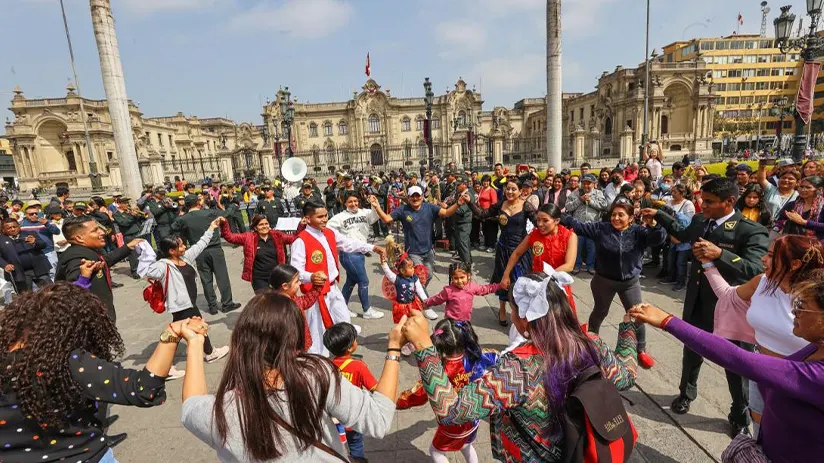
The anniversary of the Foundation of Lima is on the 28 of January. The celebrations usually take place in the historical center of the capital, with gastronomic fairs, dances, and parades. These go along with other tourist and cultural activities in surrounding districts like Miraflores, San Isidro, and Barranco.
February 2 – Virgen de la Candelaria
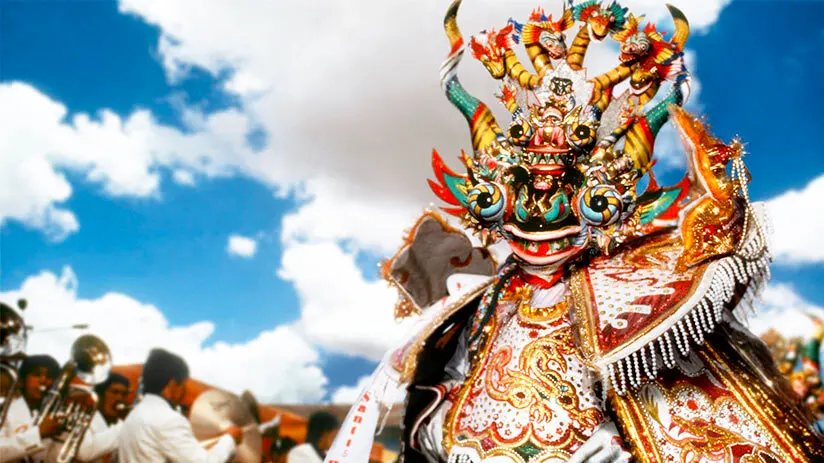
The Festival of the Virgen de la Candelaria is the most important festivity in Puno, the southernmost Peruvian city. And it is gaining relevance throughout South America! February 2 is the most important day of the party. It is when the Virgin leaves its church to go round and round the streets of Puno.
The party lasts all month, and It is one of the most celebrated processions with organized “Diablada” dance groups. Diablada is a Devilish – Typical Andean Highland dance where the dancers dress in devil costumes. There are hundreds of different dance teams competing for the best dance prize. A unique show to see!
February 26 – Carnivals
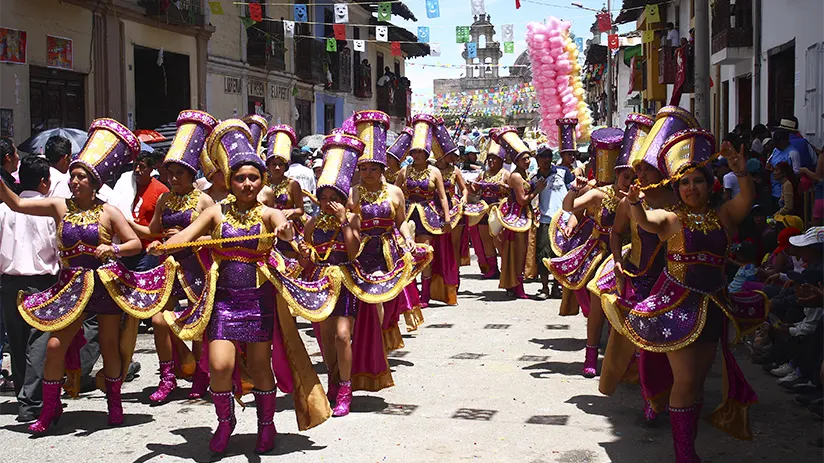
The Carnivals in Peru are celebrated in many forms in the different cities of Peru. However, these holidays generally involve Peruvians launching water balloons among men, facing women, and vice versa. Of course, the Peruvian streets and squares are the perfect places for these fun battles. No one is safe from getting wet this holiday causing the happiness of everyone!
Cajamarca, a north Sierra city in Peru, is the capital of this form of celebration. In this city, the carnival queen is also chosen among parades and food festivals; it is the most famous in Peru.
Despite February not being the best time to visit Peru, the Carnivals in the Peruvian Sierra are worth visiting. However, the main reason to visit is to witness the Yunsa in the Sierra cities. During the celebration, the inhabitants dance and dance around a tree decorated with gifts. Every so often, a member of the dance grabs an axe and starts cutting down the tree until it falls, and everyone rushes to look for the gift.
March 5 – Trujillo foundation
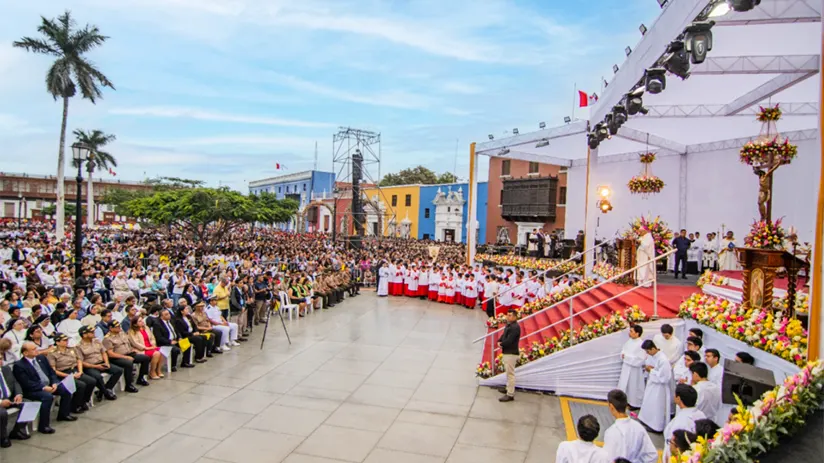
Trujillo is one of the earliest Peruvian cities that achieved its independence from the Spanish. The city of Peru North celebrates its foundation every March 5. The festivity presents a colorful parade of typical Peruvian dances. The Trujillo municipality promotes some concerts, and the main activity is the annual Peruvian Marinera contest.
The Marinera is a traditional coast dance developed by a couple in which the woman is beautifully dressed and dances barefoot; instead, the man accompanies the movements of his partner dancing with a large straw hat, a beautiful spectacle to see!
March 31 – Lord of the Earthquakes
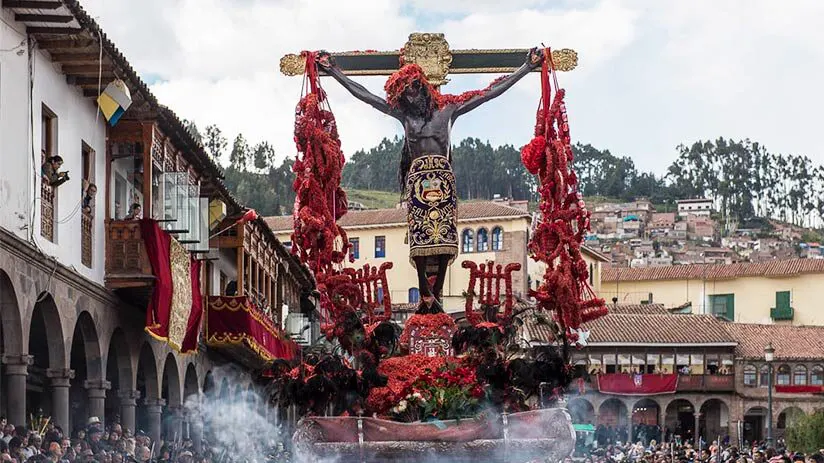
In Cusco, at the end of March and the beginning of April, the inhabitants celebrate the Señor de Los Temblores. Just in the Holy Week.
This is a miracle sculpture of a crucified Christ that was long forgotten in the warehouses of the Cathedral of Cusco up to the earthquake of 1650. At that time, the earth’s movements did not stop, and the population resolved a procession of the sculpture through the main streets of the city, miraculously stopping the earthquake.
Since then, the sculpture has won a space (chapel) inside the cathedral of Cusco. Many candles were lit in front of him for a long time, blackening the Christ. In this form, in every earthquake, pandemic, or pest in Cusco, the sculpture is taken in procession, in all cases, with the same results: a miraculous cessation of movements or an arrest of the plague or pandemic.
Nowadays, the Sculpture is paraded by the main streets and the main square of Cusco every Holy Tuesday, the historic center of Cusco is crowded with faith and devotion. Along with the Virgen del Carmen, the Lord of the Tremors is the most venerated image in Cusco. Simply amazing!
April’s first week – Holy Week
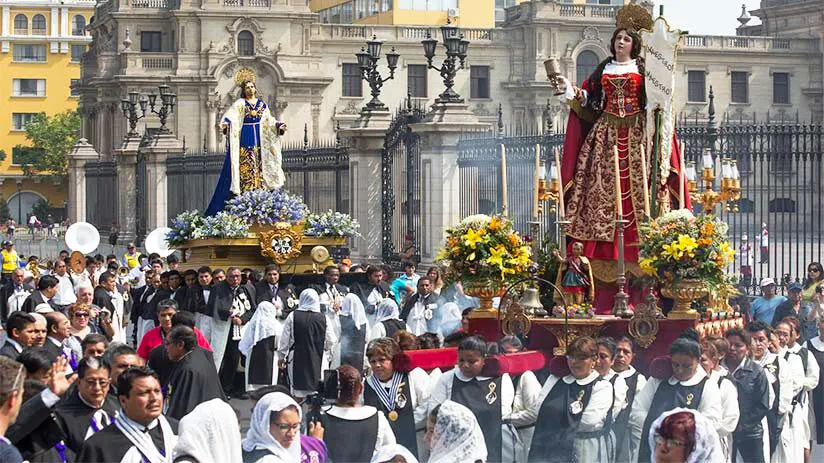
During the first week of April, the Holy Week celebrations continue with some essential processions of sculptures of Christ and Mother Mary on Peruvian cities’ main streets and squares.
On Thursday and Friday, the Peruvian families have the tradition of eating the famous “twelve dishes” to represent the dishes eaten by the Christ apostles in the Last Supper.
However, after Holy Week in Cusco and Peru there are usually no other significant holidays in Peru of importance.
May 1st – La Virgen de Chapi
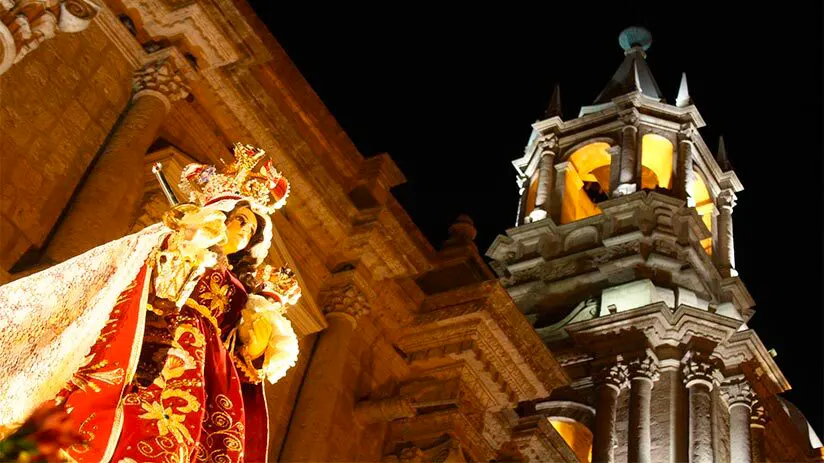
In Arequipa, one of the most famous places in Peru, along with Cusco and Puno, celebrated the Virgen del Chapi or the Virgin of the Purification.
The local people make a pilgrimage from Arequipa through an arid desert, walking more than 15 kilometers until they get to the Polobaya district, where the Virgen de Chapi chapel is located.
The Arequipa people affirm that the sculpture is miraculous. The festival features music and food and the main celebration day is 1 May.
May 15 – Lord of Torrechayoc
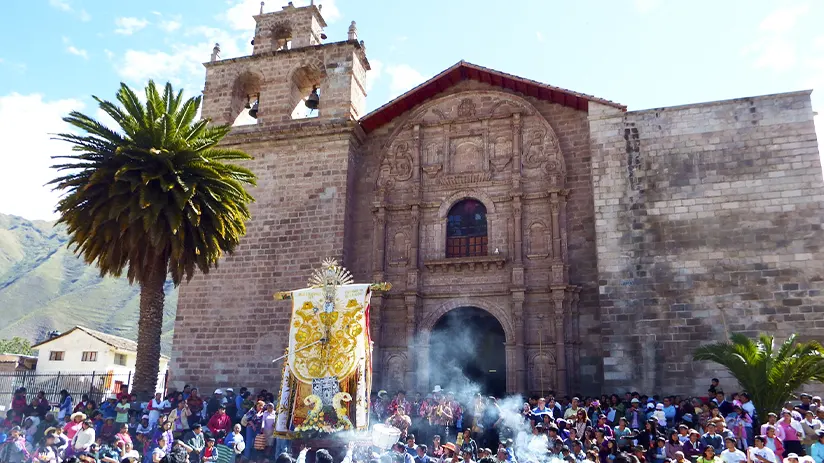
This is one of the most important Catholic holidays in Peru, specifically in Cusco. History says that a Cross was placed in the middle of the snow in 1860 for the inauguration of the Urubamba–Lares railway section, and a mass was celebrated on that occasion.
Time passed, and the travelers who used the place to rest affirmed that they dreamed of the cross and the image of Christ, he told them about the cold and the abandonment that felt. The parish priest of Urubamba, hearing these rumors, ordered the cross to be brought to his parish. Thus begins a long tradition of festivities in Peru in honor of Christ of the Cross.
Today, every May 15, the cross is moved to the local coliseum for a massive mass. After more than 30 typical dances are developed in front of him and the entire Urubamba population, the festivity is combined with music, food, gastronomy, and beer. At night, fireworks, campfires, and more music accompanied the evening.
May 2 – Cruz Velacuy
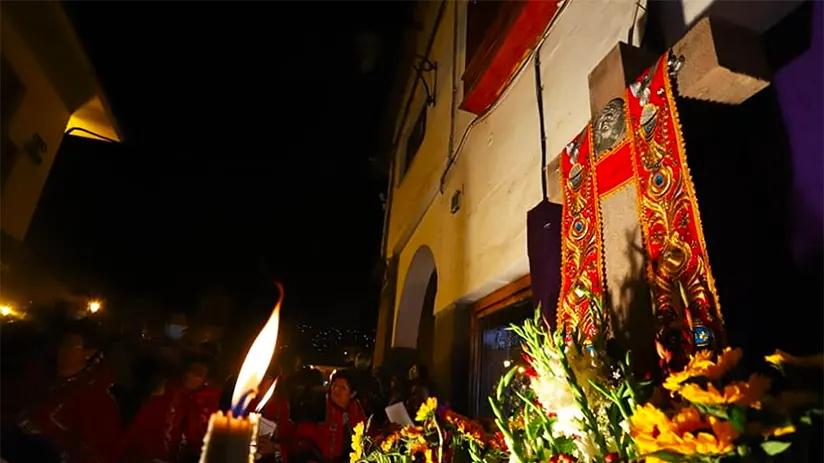
In May, the festivity of Cruz Velacuy is also celebrated. Cusco and, generally, all Andean Peruvian cities have crosses distributed on the “frontis” of churches and parishes, in addition to being in the main streets, neighborhoods, squares, and even on the slopes and on the tops of the hills.
Let us remember that at the time of the colony, these cities, being more rooted in the Inca worldview, received more evangelical and Catholic influence from the Spanish.
During the festivity of Cruz Velacuy in Cusco, it is customary to carry crosses from some peaks, hills, and sanctuaries to the front of the church or parish closer. The parishioners spend a couple of nights accompanying the cross and praying, always accompanied by music, folk dances, and food.
June 8 – Corpus Christi
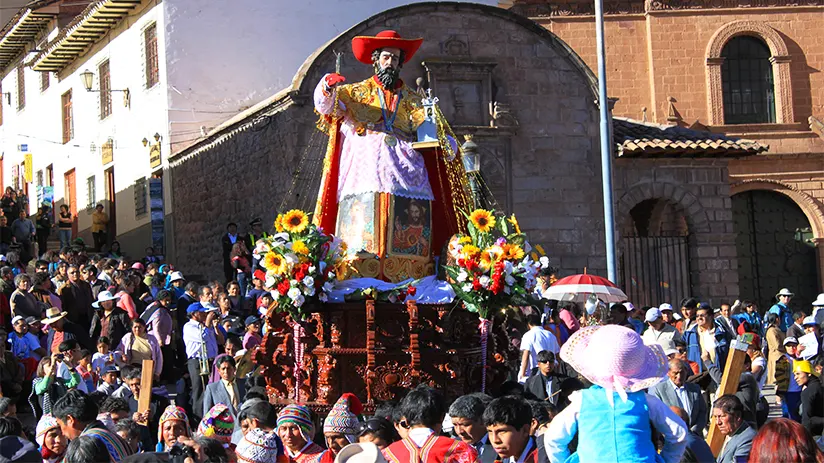
Among the holidays in Peru to experience in June, Corpus Christi is the most famous. All the saint’s statues are taken from their Churches in Cusco to the Cathedral. Cusco is divided into districts, and each one is run by a saint and his church, Santiago, Saint Sebastian, Saint Ana districts, and more.
So, these sculptures are paraded through the main streets and the main square. Each saint is accompanied by a live music band and a local dance. Around the main square, there are food festivals, more music, beer, and happiness. Undoubtedly, this is a spectacle not to be missed.
June 24 – Inti Raymi
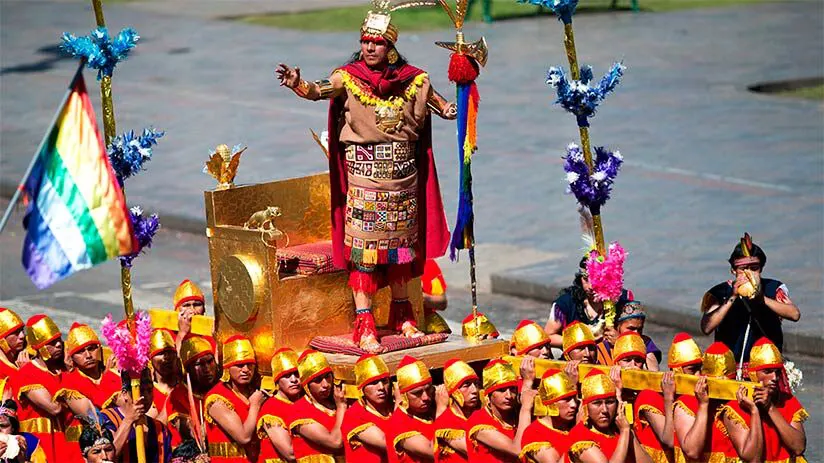
June is a big month in Peru for festivals; In Cusco, the anniversary of the city is celebrated. But also, during the month, there are traditional activities and food festivals in the main neighborhood of the city. Also in Cusco on June 24 is the Inti Raymi Inca festival.
This is the traditional festival of the Sun god, which the Incas worshiped. The festival coincides with the winter solstice and the harvests. A group of actors, actresses, professional dancers, and volunteers generally are dressed in the Inca style, representing Inca soldiers, priests, Qollas (chosen virgins), the Panaca (Inca royalty), and the Inca.
All of them represent the ancient Sun festivity developed by their ancestors in several numbers of dances and coordinated movements in the Qoricancha (Temple of Sun) and the Sacsayhuaman. Imagine a giant theatrical number in broad daylight; that is the Inti Raymi festival! The entrances to see this spectacle is limited and usually to be sold out 6 or 7 months before. So, hurry up!
June 26 – Lord of Qoyllority
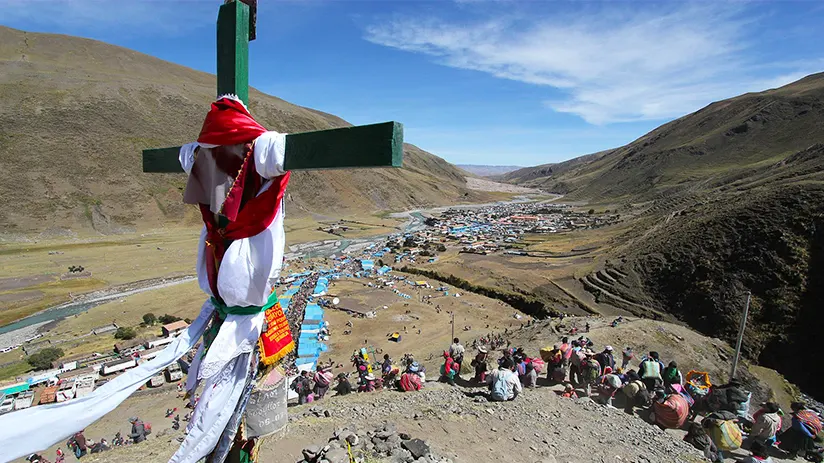
Also in June in Cusco is Señor de Qoyllority, which is the largest pilgrimage in South America. History says that Mariano Mayta, a shepherd boy, met another shepherd boy in the Sinakara Valley on the slopes of Qolkepunku snow in the late 17th century.
They played for a long time until they decided to return to Mariano’s house. His parents, seeing their son and the strange child dressed in clean, luxurious, and bright clothes, decided to call the local priest. When the churchman arrived at Mariano’s house, he only found Mariano and his parents, the strange child had fled.
So he chased him until he reached a rock, where the image of a crucified Christ miraculously appeared. Today, more than 10 thousand people walk on foot to Ausangate Mountain, worshiping a painting of the Niño Jesus. Dances, live music bands, and pilgrims accompany the pilgrimage to the Church; a massive mass is developed on the slope of Ausangate.
The night is adorned by more dances, music, and hot punch. After, the pilgrims return from the mountain with blocks of ice that they place on their lands to irrigate with the sacred water. This festivity is recognized by UNESCO as an intangible heritage of humanity.
July 24 – Pisco’s day
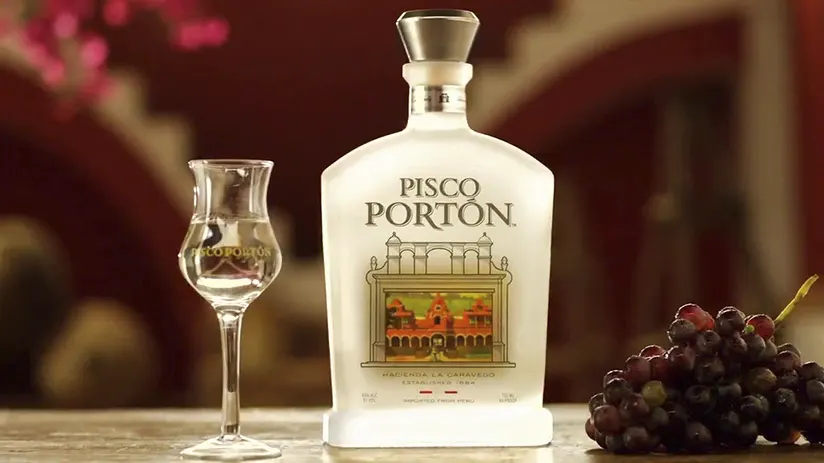
During the first week of July, Ica celebrates Pisco Day, also called Pisco Sour Day. Pisco is a Peruvian brandy and one of the most emblematic drinks in the whole country.
In Ica, tourists can choose to visit the different wineries of Tacama, Ocucaje, El Carmelo, Vista Alegre, and others, and tasting the main wines and the different Piscos is a great way to enjoy July.
Also, in different main squares and streets of Peruvian cities, workshops on Pisco Sour preparations, are developed. The Pisco Sour is the official drink of Peru.
July 28 – Independence Day
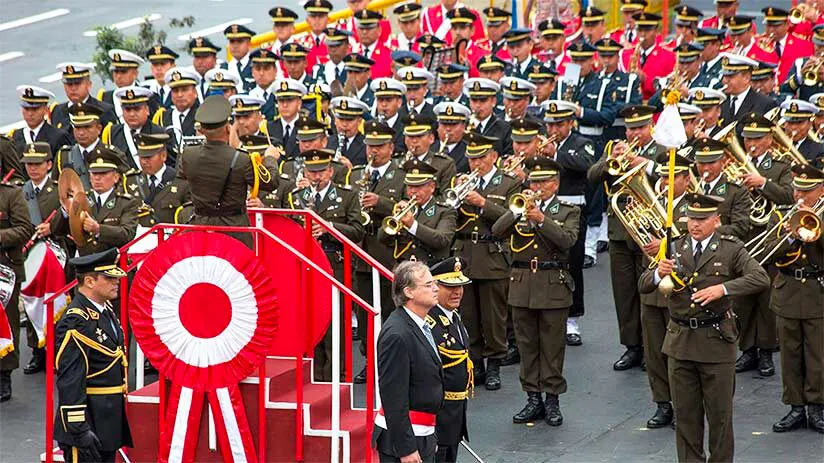
July is recognized for having some national holidays. From 27 to 29 you will find locals celebrating the Independence of Peru. The country celebrates this day with a variety of celebrations, which typically include food, music, fairs, and lots of partying.
On July 28, the Declaration of Independence in Lima by Jose de San Martín is commemorated. While on July 29 you usually enjoy the Great Military Parade. And on July 30, the Thanksgiving ceremony for Peru is celebrated, always in the presence of the President of the Republic and other high authorities. Being able to vacation in July is one of the best family vacation ideas.
August 1st – Pachamama Raymi
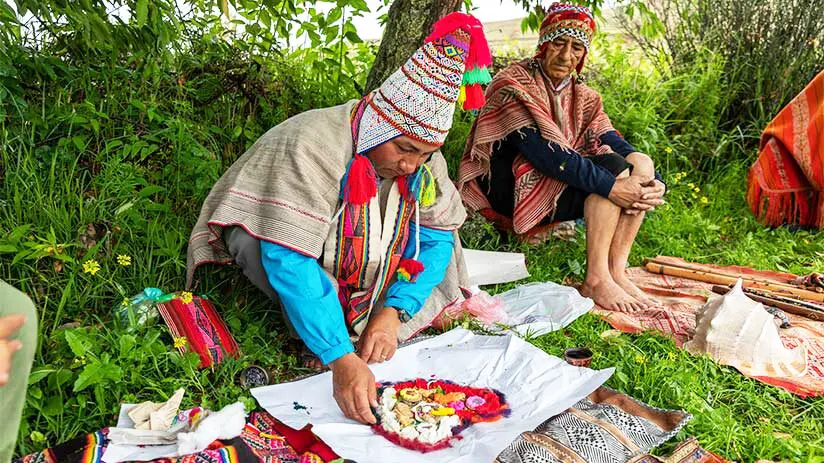
In the Andean world vision, August 1st is considered the beginning of the new Andean year. On this day, the Incas worshiped the Earth as a mother (generator of life); she gave them food, vegetables, and even a home. And, at the end of her life, they returned to her. In this form, every August 1st, the Cusco population realizes an Earth’s pay (Pago a la Tierra) to pay homage to Pachamama mother Earth.
This consists of a gift made of coca leaf, incense, candies, cookies, and sheep bait, among other exotic products, wrapped in paper and decorated as a present. After, this little package is buried in a sterile zone by a Shaman (An Andean priest) with chants and prayers. In this way, the juxtaposition of Catholic and pagan (Inca) thought is united in a single form of prayer.
August 15 – Arequipa foundation
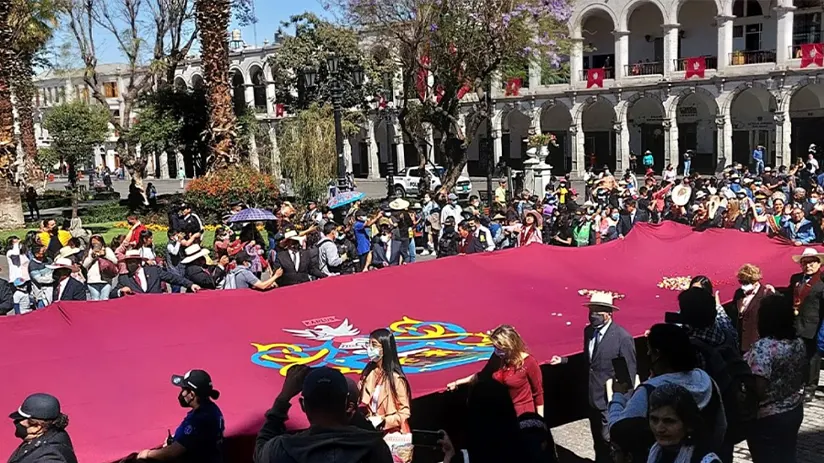
August 15 is also the celebration of the Anniversary of Arequipa. Many locals from all over the country flock to the White City to pay tribute to this important date. This famous folk festival is usually accompanied by bullfights, handicraft fairs, allegoric cars, and much more.
Arequipa is the second-largest city in Peru, so its anniversary is a special time to visit it. You can see the Arequipa Picanterias (Traditional restaurants where spicy food is served) and taste delicious dishes like Rocoto Relleno (stuffed hot pepper), Chupe de Camarones (Shrimp soup), and its local soda called Kola Inglesa.
August 30 – Santa Rosa de Lima
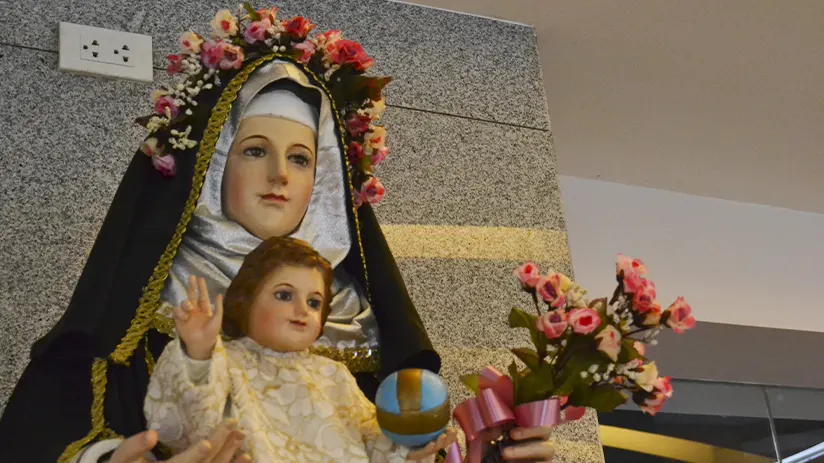
Undoubtedly, the most important festival in August is that of Santa Rosa de Lima. Santa Rosa was the first saint in all of America to be recognized by the Church and the Pope in 1671. She is the patron saint of Peru, Filipinas, and the armed forces of Venezuela and Argentina.
She belonged to the tertiary order of the Dominicans, and helped a lot of the poor and mendicant people of colonial Peru, besides to do miracles. Today, the Peruvian faithful visit her house and the shrine that she constructed to attend to the poor, and its well where she threw the key to her chastity belt.
Also, the Santa Rosa well is developed as one of the most important Peru facts this month. There, the faithful usually throw letters of supplication, asking for health improvements, financial improvements, even in the realm of love. Rumors ensure that the pleas and requests are answered and come true!
September 17 – Lord of Huanca
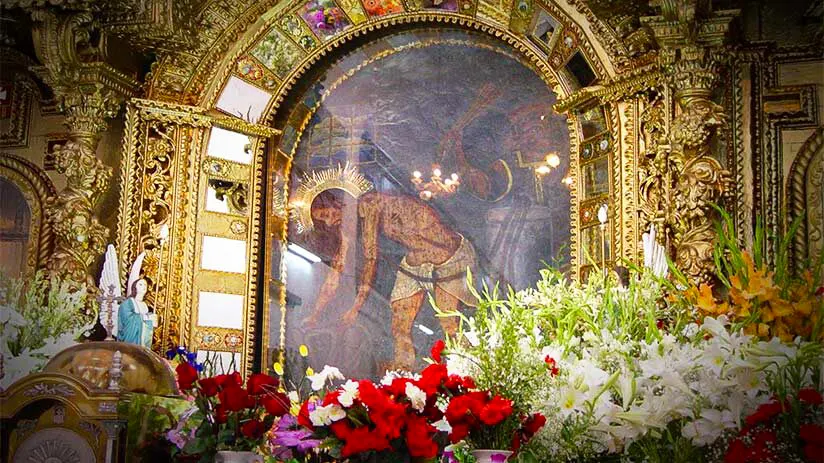
In the region of San Salvador near Cusco, Señor de Huanca is celebrated. History affirms that an Andean slave, Diego Quispe, was imprisoned due to his protection, a companion of his from the whipping of his Spanish patron.
On a certain day, he escaped from his prison near the Yasos mines to find shelter in Chinchero. In a middle way, he rested over stone blocks, praying all night to not be found. In this form, Christ, still with the sores from his whipping, appeared in a dream to the young Indian to say not to be afraid and sent him, as a messenger, to the closest town to communicate this apparition and build a Catholic sanctuary in this place.
Nowadays, thousands of people travel to the church of Señor de Huanca in the month of September to assist in a massive mass and collect water from a nearby spring; legend says it is holy water. But the main celebration day is September 14. It is one of the holidays in Peru and Cusco that you cannot miss.
October 8 – Angamos battle
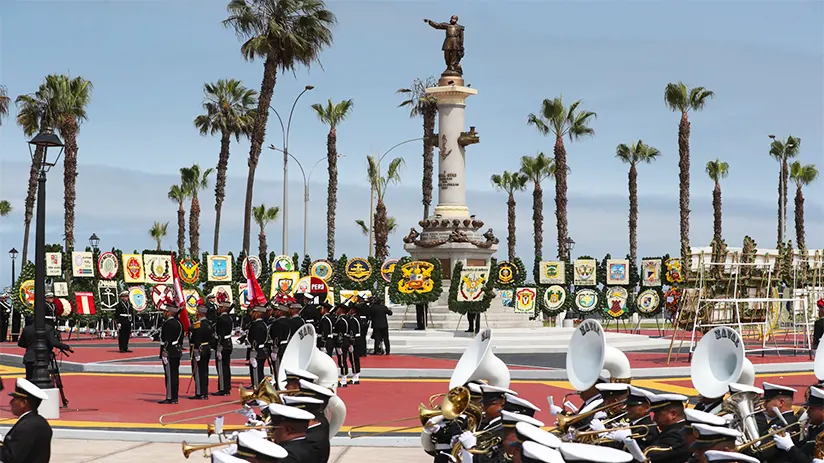
October 8 is an important day in Peru. Despite having lost the war of the Pacific against Chile in 1879 and its main battleship with his war hero Miguel Grau in this battle, the Andean country commemorates the bravery of Miguel Grau, nicknamed El Caballero de los Mares.
The combat of Angamos is one of the main holidays in Peru with a military theme. The Peruvian flag is raised in several public squares in the country, in addition to witnessing military parades and food festivals in the nearby streets.
October 28 – Lord of the Miracles
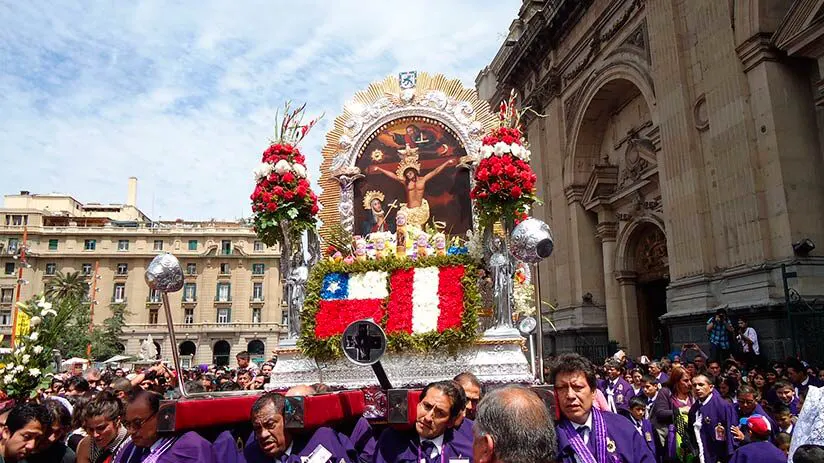
In October, the Señor de Los Milagros (Lord of the Miracles) is celebrated. History says that an African slave who comes from Angola painted an image of a crucified Christ over a wall of a modest church in Pachacamilla (Southern Lima) that was used as a temple for the slaves.
The miraculous happened in 1655 and 1687, when a series of earthquakes devastated Lima, destroying houses and temples, the parish of Pachacamilla was no exception. However, the wall where the image of the crucified Christ stood remained standing. Since that date, a copy of the miraculous image is paraded through the main streets of the Peruvian capital every October 28.
Charging more devotees and faithful over the years. In this form, each October 28, the faithful celebrate the Lord of the Miracles dressed in purple. Lima is flooded with purple in its streets and clothes. On the day of the procession, all wear purple robes, sin,g and pray accompanied by the image of the Lord of Miracles.
October 30 – Creole Song Day
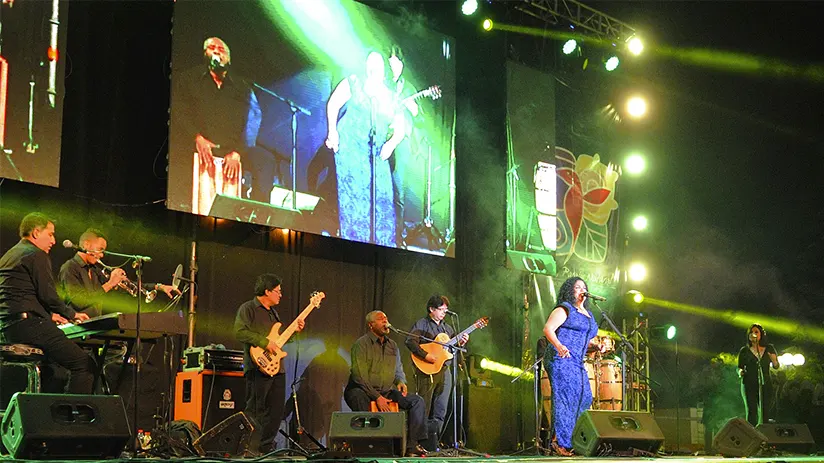
In Lima, October 31, the day of the Creole song, is also celebrated, especially in the Lima tourist districts of Barranco, Miraflores, La Victoria, and Barrios Altos. There you can see the different restaurants, and nightclubs playing Creole music and dancing to the Marinera.
Besides seeing the neighbors of these districts form parties on the streets with Creole music, food, and dances. Of course, the children have their own festivity, Halloween, but don’t worry; everyone respects the party they want to celebrate. Make sure to take advantage of the tours in Peru during the month of October.
November 1st – All Saints’ Day
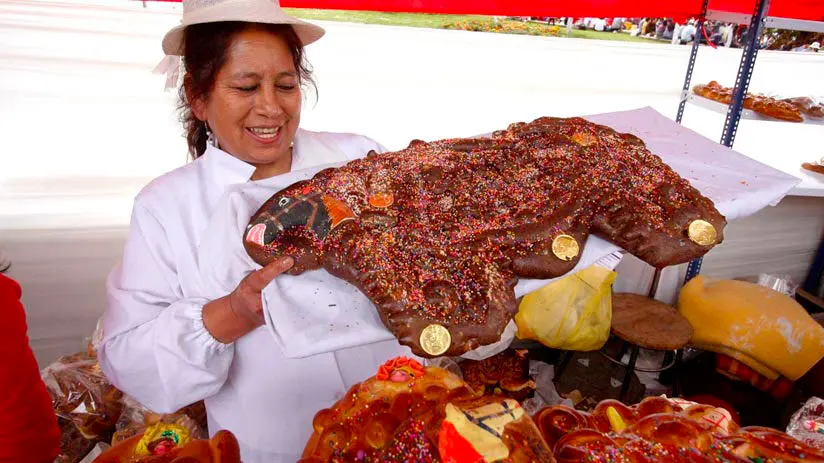
The Day of All Saints and the Day of the Deceased are both celebrated on the one & two of November, and these Peruvian festivities are celebrated all over the country. In ancient times, the Incas usually adore their dead and this practice is still practiced by the Peruvians.
On November 1st, Peruvians go to the cemeteries, carrying food, beer, and even a live music band for their deceased. They spend the night with them until the next day as a form of accompanying their dead and remembering them. Therefore, these days feature a mix of Christian and Indigenous beliefs. Also, this day is one of the most important festivals in Cusco, where the Lechon (baked pork) is usually consumed by the Cusco population.
November 2nd – Puno’s foundation
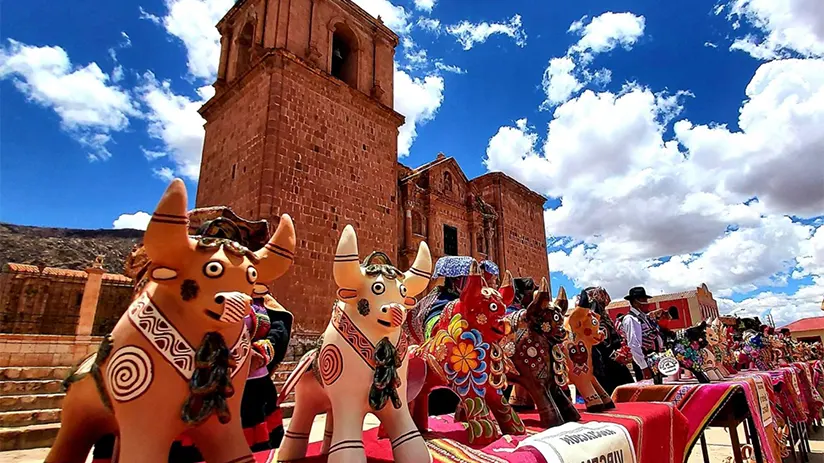
In November, the Week of Puno is also celebrated. At the beginning of the month, in the historic center of the city, certain dramatizations are carried out about the birth of Manco Cápac and Mama Ocllo. They emerged from the waters of Lake Titicaca to find the well-known Inca Empire in Cusco.
Besides that, you can enjoy a great folk festival, craft fairs, exhibitions, conferences, competitions, and much more in the Peruvian plateau city.
December 24 – Santuranticuy
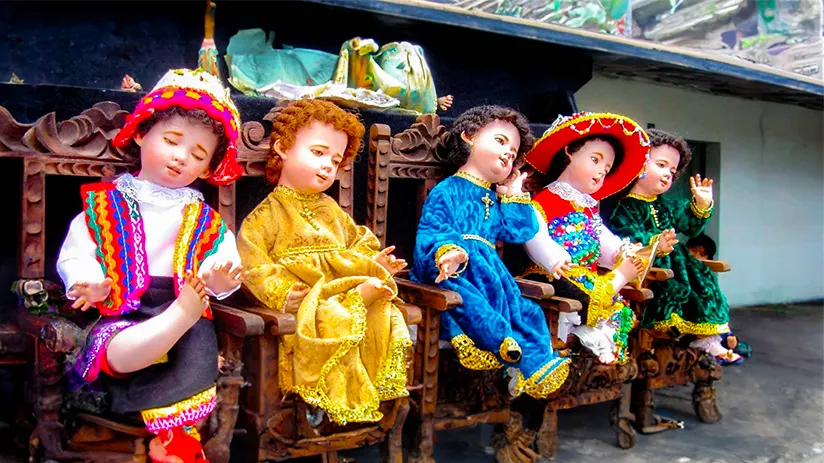
On 24 December, the festival of Santuranticuy takes place in the Plaza de Armas in Cusco. This Cusco festival comes from the colonial period when the Spanish priests and masters taught the Andean young painting and sculpture to represent the saints of the Catholic religion in the new churches that were being built in Cusco (In a way to extirpate the Inca idolatry of the place).
From this period, the Andean artists began to show their masterpieces to the general people every December 24. Today, the Festivity of Santuranticuy brings together the greatest exponents of Cusco art in the Plaza de Armas. On the same day, the visitor can see beautiful sculptures and paintings of “Cusco school”, a Cusco style art.
December 25 – Christmas
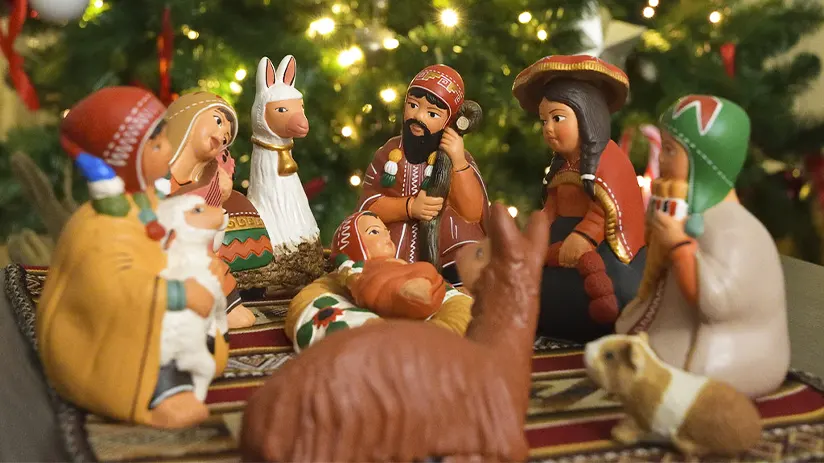
Christmas is celebrated in Peru as it is all over the world on 25 December, with all the churches having Mass and showing their sculptural representations of the births of the baby Jesus, among other activities.
With Peru being a very religious country, these holidays in Peru are not so different from other Christmas festivities around the world. However, Christmas in Cusco is a very special time to be in Peru and enjoy hot chocolate and Panettone (After Italy, Peru is the second country in the consumption of this Italian sponge cake).
December 31 – End of the year’s party
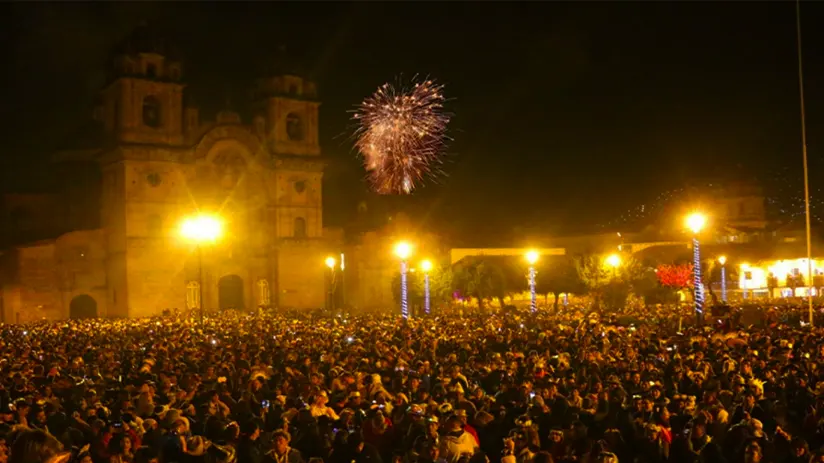
Peru is not only an Archaeological or natural attraction but also cultural. The End-Year’s party is the best example, many Peruvian tourist cities like Piura and Tumbes (north beaches), and Cusco (Machu Picchu), prepare their best offers in hotels, restaurants, spas, and tours in general.
Without mention that you can go around the main square of Cusco at 12 midnight, drinking champagne, among a crowd of different nationalities (Cusco is a cosmopolitan city), before dancing and enjoying in one of the many discos of the Imperial city!
Also, if you are asking if Peru is safe to travel to this time, don’t worry, Peru, particularly Cusco, is very Safe; the National Police and government always protect security on this day as this celebration is the best example of a cosmopolitan display of current festivities In Peru.
“GRATITUDE UNLOCKS THE FULLNESS OF LIFE”
There is no better time to go to Peru, with festivals throughout the year any time is excellent. The list of things to do in Peru is endless, so do your research and book a trip to Peru today! Being able to enjoy this magical country during its festivities and holidays in Peru is one of the best things.
Together with Machu Travel Peru, we hope to be of help. If you want to know about our different routes, you can consult with our team of advisers. Even if you are looking to stay during one of these festivities, you can book with us!
Peru has so much to offer it can be hard to know where to start. With many years of experience in the tourism sector, Machu Travel Peru is happy to help with anything regarding your trip to Machu Picchu and any tours around it. Make your Machu Picchu experience an unforgettable one!
